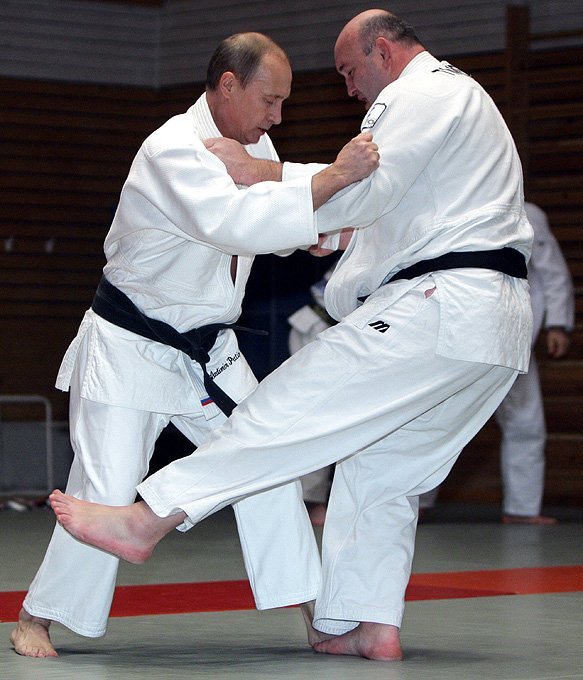|
|
Vladimir Putin Held A Training Session In Judo, St. Petersburg, Russia
|
The ancestors of modern Russians are the Slavic tribes, whose original home is thought by some scholars to have been the wooded areas of the Pinsk Marshes. The East Slavs gradually settled Western Russia in two waves: one moving from Kiev toward present-day Suzdal and Murom and another from Polotsk toward Novgorod and Rostov. From the 7th century onwards, the East Slavs constituted the bulk of the population in Western Russia and slowly but peacefully assimilated the native Finno-Ugric peoples, including the Merya, the Muromians, and the Meshchera.
• Kievan Rus
The establishment of the first East Slavic states in the 9th century coincided with the arrival of Varangians, the traders, warriors and settlers from the Baltic Sea region. Primarily they were Vikings of Scandinavian origin, who ventured along the waterways extending from the eastern Baltic to the Black and Caspian Seas. According to the Primary Chronicle, a Varangian from Rus' people, named Rurik, was elected ruler of Novgorod in 862. In 882 his successor Oleg, ventured south and conquered Kiev, which had been previously paying tribute to the Khazars; so the state of Kievan Rus' started. Oleg, Rurik's son Igor and Igor's son Sviatoslav subsequently subdued all local East Slavic tribes to Kievan rule, destroyed the Khazar khaganate and launched several military expeditions to Byzantium and Persia.
In the 10th to 11th centuries Kievan Rus' became one of the largest and most prosperous states in Europe. The reigns of Vladimir the Great (980–1015) and his son Yaroslav I the Wise (1019–1054) constitute the Golden Age of Kiev, which saw the acceptance of Orthodox Christianity from Byzantium and the creation of the first East Slavic written legal code, the Russkaya Pravda.
|
|









